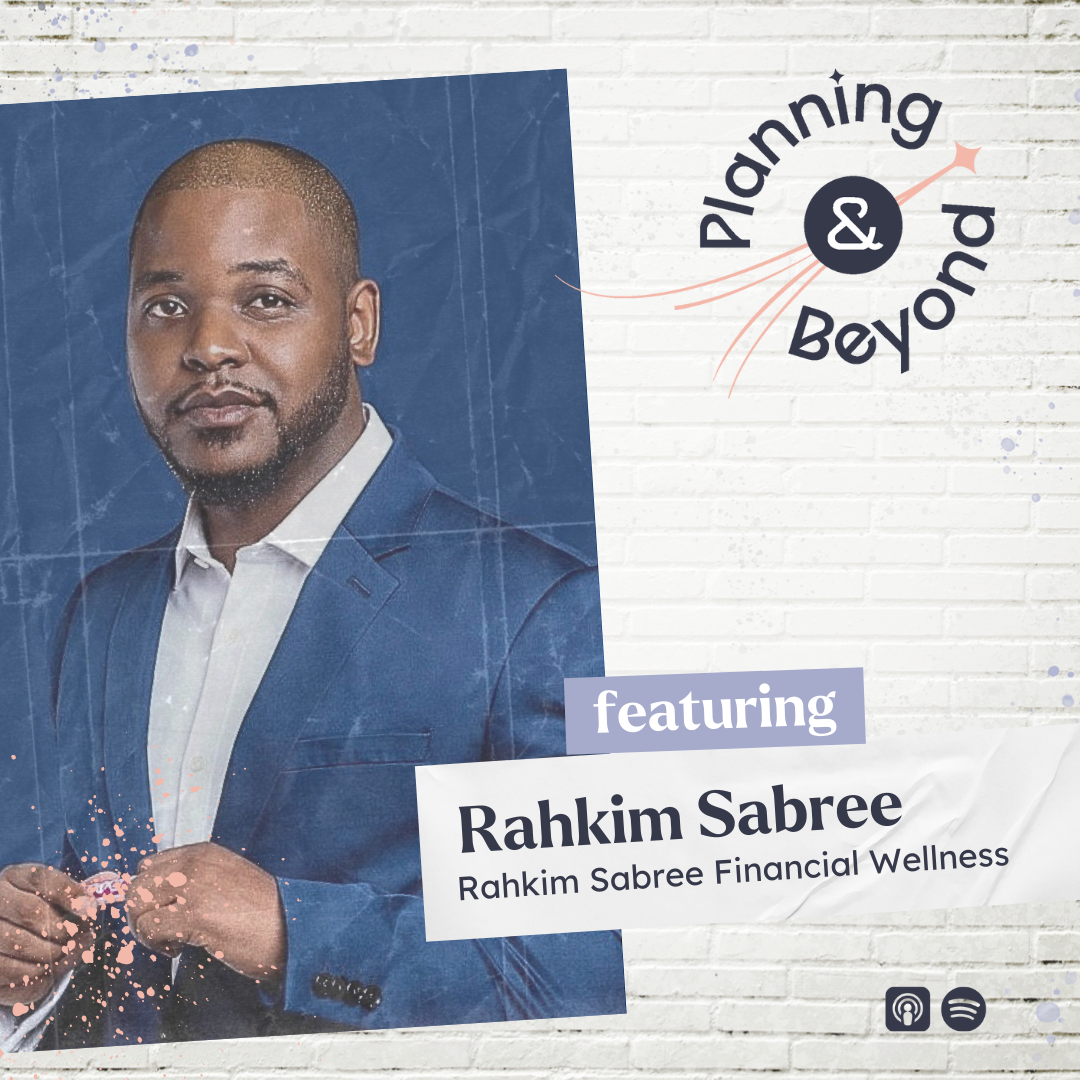Beyond the Numbers: How Financial Trauma Shapes Client Behavior (Even for Wealthy Clients)
From Our Founder Ashley Quamme
When I interviewed Rahkim Sabree, financial therapist and accredited financial counselor, for the Planning & Beyond™ podcast, I was struck by something he said that resonates deeply with my work supporting advisors: "Financial trauma doesn't discriminate by income level." That high-earning client with the meticulous spreadsheets and constant vigilance around their portfolio? The one who looks perfect on paper but can't seem to enjoy their wealth? Their behavior might not be just personality – it could be financial trauma manifesting in unexpected ways.
As a licensed therapist specializing in financial behavior, I've observed this pattern repeatedly. Financial trauma isn't limited to those experiencing poverty or financial struggle – it shapes behaviors across the wealth spectrum, often in ways that aren't immediately apparent to advisors. It reminds me of a quote from my time as a therapist, “trauma has no face.”
What Exactly Is Financial Trauma?
Rahkim defines financial trauma as "any instance observed or experienced that has a negative impact on the way that you view, interact with, or believe about money." This definition highlights something crucial that many advisors miss: financial trauma can be both direct (experienced personally) or vicarious (observed in others). His definition, which encompasses the observed experience, is something that I have a deep appreciation for.
This means your client didn't necessarily need to experience poverty themselves to develop financial trauma. Perhaps they watched their parents struggle, heard stories about family members losing everything, or absorbed cultural narratives about money. These vicarious experiences can shape money beliefs and behaviors just as powerfully as direct ones. The problem is, we as practitioners and even clients tend to dismiss the impact of those vicarious experiences.
Financial Trauma in High-Net-Worth Clients
When Rahkim and I discussed financially successful clients who display trauma responses, he highlighted several key markers to watch for:
Hypervigilance around money – Constant worry about market conditions, excessive spreadsheet tracking, or frequent calls about portfolio performance despite substantial assets
Success that masks trauma – As Rahkim noted, "Capitalism rewards that behavior in the workforce," making financial trauma harder to spot when it manifests as material success through overwork
Inability to enjoy wealth – Difficulty spending on themselves or experiencing pleasure from their money despite objectively having "enough"
Identity fusion with money – Assigning character traits to financial status: "I am powerful because I have money. I am respected because I have money. I am loved because I have money."
That last insight particularly resonated with me. When a client's core identity becomes entangled with their wealth, the relationship becomes much more complex than simple numbers on a statement.
The Three E's Framework for Advisors
So how can advisors support clients when financial trauma might be present? Rahkim shared his "Three E's" framework that provides an elegant structure for advisors to follow:
1. Exposure
Begin by simply acknowledging that financial trauma exists. You might say, "Sometimes our past experiences with money can shape how we feel about financial decisions today. Have you ever thought about how your early money experiences might be influencing your comfort with spending now?"
This normalizes the connection between past experiences and current behaviors without requiring psychological expertise. It simply opens the door to deeper conversation.
2. Education
Depending on your comfort level, you can either provide basic education about financial trauma patterns or connect clients with resources. This doesn't mean diagnosing anything – it means helping clients understand that their feelings and behaviors around money have context and meaning.
A statement like, "That vigilance around tracking every dollar has likely served you well in building wealth. I'm curious whether it still serves you now in this phase of your life?" can spark meaningful reflection.
3. Execution
The execution phase is primarily the client's responsibility, but advisors can provide crucial community support. Rahkim emphasized that being part of a client's supportive community can be as simple as saying, "I'm here for you," or establishing regular check-ins around financial wellness beyond just the numbers.
Practical Questions to Uncover Financial Trauma
The question Rahkim recommended that struck me as particularly powerful was: "What does money represent to you?"
He noted that most responses fall into three categories: security, freedom, or power. The follow-up questions are even more revealing:
Security against what?
Freedom to do what?
Power to do what?
These deceptively simple questions can unlock profound insights into your clients' relationship with money and help you better understand the "why" behind behaviors that might otherwise seem irrational.
Another powerful question to add: "Who are you outside of your money?" This question can be particularly transformative for high-net-worth clients whose identity has become intertwined with their financial success.
Moving Forward: The Holistic View
What makes addressing financial trauma so challenging in advisory relationships is that traditional financial planning tends to be siloed rather than holistic. As Rahkim pointed out, "When we're talking about money traditionally anyway, and still persistent to this day, it's so siloed. It's not holistic."
The numbers-driven approach that's common in financial planning can miss the emotional and psychological dimensions that drive financial behavior. By expanding your conversation to include the more holistic aspects of your clients' relationship with money, you create space for deeper understanding.
Remember, the goal isn't for you to become your client's therapist. As I often tell advisors, "The expectation is not that you are everything and everyone for your client." Rather, your role is to be aware enough to notice potential signs of financial trauma and skilled enough to navigate those conversations with empathy and appropriate boundaries.
When you sense that deeper support might be beneficial, that's when referrals to financial therapists or Accredited Financial Counselors (AFCs) become invaluable. Building a network of behavioral money specialists you trust can be one of the most powerful ways to support clients whose relationship with money goes beyond what traditional planning can address.
Final Thoughts
Financial trauma shows up in unexpected ways across the wealth spectrum. That penny-pinching retiree with millions who still takes the free pen after every meeting? The executive who can't stop working despite having "enough" for three lifetimes? These behaviors often have roots deeper than personality quirks or simple habits.
By expanding your awareness of how financial trauma manifests and developing skills to address it compassionately, you can help clients create not just financial security but genuine financial well-being – where money becomes a tool for living rather than a source of ongoing stress or fear.
If you're interested in learning more about financial trauma, I recommend checking out the Financial Therapy Association, Chantelle Chapman's Trauma of Money program, or following Rahkim's work through his Substack newsletter or Forbes articles. His upcoming book on financial trauma, due for release in November, promises to be an excellent resource as well.
Remember, finances don't have feelings, but your clients do.


